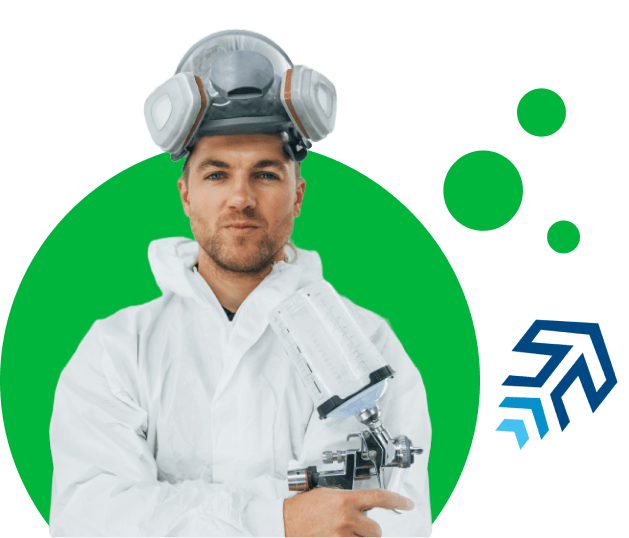Signs Your Floor Needs Waterproofing

What are some common signs that your floor needs waterproofing?
- Visible water damage
- Persistent dampness or moisture
- Musty odor
- Cracks or gaps
- Basement flooding
- Efflorescence
Overview
- Floors endure constant foot traffic and potential liquid spills, making waterproofing essential to prevent damage and ensure safety.
- Recognize signs of the need for floor waterproofing such as visible water damage, persistent dampness, musty odor, cracks or gaps, basement flooding, and efflorescence on concrete floors.
- Utilize sealants, coatings, ventilation, drainage, and professional advice for effective waterproofing solutions in your home.
Floors within our homes serve as bustling routes, enduring constant foot traffic, and potential liquid spills. However, despite their essential function, waterproofing issues often elude our attention. Neglecting these concerns can lead to significant financial burdens and jeopardize safety.
In this article, we will highlight some signs your floor needs waterproofing as timely intervention is crucial to keep the longevity and security of our living environments.
Visible Water Damage
Visible water damage comprises different indicators that water has penetrated the flooring material and affected its integrity. Discoloration is one of the common signs where you might notice patches of staining or a change in the color of the floor surface. Warping is another sign where the floorboards or tiles may swell or distort due to water absorption.
Bubbling may also occur especially with laminate or vinyl flooring since water seeps underneath the material and causes it to bubble up. These visible signs of damage not only detract from the aesthetics of your floor but also indicate underlying issues that need to be addressed.
Persistent Dampness or Moisture

Posing a risk of moisture-related damage and potential health hazards, persistent dampness or moisture on your floor is a concerning sign that there is water infiltration. Areas like bathrooms, kitchens, and basements are susceptible to these issues because of their high humidity levels and exposure to water.
Persistent dampness not only compromises the structural integrity of the floor but it also makes an ideal environment for mold. Waterproofing methods like applying sealants, membranes, or coatings create a protective barrier that hinders water from penetrating the floor surface and reaching the underlying structure.
Musty Odor
A musty odor in your home especially in poorly ventilated or humid areas can be a clear sign of underlying water damage and mold growth. Musty odors are often linked with the decomposition of organic materials by mold which releases volatile compounds that emit unpleasant smells. When moisture levels are high, it creates an ideal breeding ground for mold.
Waterproofing plays a vital role in addressing musty odors by preventing moisture buildup and inhibiting the growth of mold. Waterproofing methods like sealing cracks and gaps, applying waterproof membranes or coatings, and improving ventilation systems can mitigate moisture-related issues and remove musty doors.
Cracks or Gaps

Leading to extensive damage to the subfloor and surrounding structures, cracks or gaps in your flooring material create a significant risk of water infiltration. These openings make pathways for water to seep through whether from surface spills, plumbing leaks, or groundwater intrusion.
Depending on the type of flooring and the severity of the damage, methods that include applying sealants, caulking, or poxy fillers can be beneficial. Sealing cracks and gaps can minimize the risk of water infiltration which preserves the integrity of your flooring.
Basement Flooding
Basement flooding poses a threat to both the structural integrity of your home and the safety of your belongings. It is usually triggered by heavy rainfall, plumbing malfunctions, or groundwater seepage. To safeguard against these risks, waterproofing the basement floors is important.
Waterproofing solutions may include installing drainage systems to redirect water away from the foundation, applying specialized sealants or coatings to the basement floor, and sealing any cracks or gaps in the foundation walls. Given the critical importance of protecting your basement from flooding, consulting with a professional waterproofing contractor like Flooring Solutions is advisable.
Efflorescence
Characterized by its white and powdery residue on concrete floors, efflorescence is a common phenomenon that results from water migration through the concrete. Efflorescence not only detracts from the appearance of concrete floors but also indicates ongoing moisture issues. Persistent moisture within the concrete can compromise the structural integrity and lead to degradation and potential damage.
Various techniques can be used to safeguard concrete floors including applying sealants, coatings, or membranes specifically designed to resist water penetration. Addressing these issues improves ventilation and ensures proper surface preparation to enhance the effectiveness of waterproofing efforts.
Key Takeaway
Recognizing these signs your floor needs waterproofing is crucial for preserving your floor’s integrity and your home’s underlying structures. Promptly addressing these issues with appropriate waterproofing measures can prevent further deterioration.
Flooring Solutions Philippines offers top-notch flooring expertise, providing alternative waterproofing solutions and protective coatings tailored to your needs. Enjoy a seamless customer experience with us and kickstart your flooring project today by reaching out!




